#study in Malaysia from Pakistani students
Explore tagged Tumblr posts
Text
0 notes
Text
Got To Be Real
My name is Kinza Amjad. Kinza is my first name and Amjad is my father’s name. Well, in reality, everyone calls me Kinna. The name was chosen by my mother. It means “hidden treasure.” I was born in Pakistan and came to Hong Kong at the age of nine.
My parents had already moved to Hong Kong before I did. I lived in Pakistan with my grandparents. My grandfather and I traveled to Hong Kong in 2007. My first flight is still fresh in my mind. I was terrified, but also happy, that I would be meeting my parents in a few hours. Do you want to know what difficulties I faced when I came to Hong Kong? Well, when I first arrived in Hong Kong, I didn’t speak the language very well. My English was also poor. Only a few words make sense to me. I’ve learned English on my own from time to time. My English isn’t great, but it’s a lot better than it was previously.
In the short story, I studied in primary 4 when I came to Hong Kong and attended Delia School after graduating from primary school. Following that, I completed a diploma in general studies and I am now enrolled at UOW College in Kowloon City. The course I have chosen is Associate of Arts in English for Professional Communication.
There are many things that I enjoy and dislike. Playing cricket, photography, traveling, and cooking are some of my favorites hobbies. I joined the cricket club when I was in secondary school. Interschool cricket was something we used to do. I also have a number of medals. I also enjoy shopping because it is important for me to keep my wardrobe up to date. Beside that, I love travelling very much I visited Malaysia and Singapore. I’ve made new friends and enjoy exploring new places and foods. Vegetables aren’t my favorite food. Only a few vegetables are consumed by me. It’s quite difficult for me to choose a dish when I’m out with friends. I always seem to be able to get my hands on what I want. Pakistani and Indian food are two of my favorite foods. It's absolutely delicious. Chicken biryani, samosa chaat, and chicken curry are among my favorite dishes. Pizza is another one of my favorite foods.
I am the one with big dreams. I’m always aiming for success. One of my weaknesses is that I lack confidence. When I have to speak in front of a group of people, I am shy. I’m hoping that I’ll be able to realize my goals. My goal is to work as a primary school teacher. I enjoy teaching and playing with children. Because there are so few English-speaking schools in the city, I wish to educate students in Pakistan. In our small village, there are no English schools. The majority of the students attend school in the city. In my village, I also wish to open a school. I wish to assist individuals who are unable to attend education because of financial limitations.
1 note
·
View note
Text
My Journey of Never Give Up

I was born on 27th July 1989 with Cerebral Palsy disease; a neurological disorder which affected my right side of body including speech. I had experienced verbal bully and child abuse (of every kind). I attempted suicide many times. My first suicide attempt was in 5th grade of primary school. I hurt myself many times. I didnt accept the way i was born.In 2009, I had a motorbike accident due to which i am facing consequences till now. After one month, I had my first epilepsy attack in home. I fainted for almost 30 minutes. Later, It was diagnosed that i have epilepsy disease by my family psychiatrist. I started my treatment. In 2010, I discovered Kpop during my treatment process which changed my whole life. I started smiling again. It changed my perception about myself and my diseases. I accepted my myself the way i am. In just two years, I left all medication. I got free of epilepsy.
In 2012, I got recognition for my promotional documentary from Korean rookie artist “JJUN” and Korean news portal like Herald and Naver. I was the first Pakistani fan whom received signed poster and albums from singer himself. Unfortunately, he is not active these days.It seems he left music.

In 2014, I went into depression after my university graduation. In 18th of December i undergone into abdomen surgery which is still a nightmare to me. My struggle with depression continued after my surgery too. I started working to get busy myself. I spent most of time watching Korean dramas and movies. If I wasn't a hallyu fan i would have died at that time.
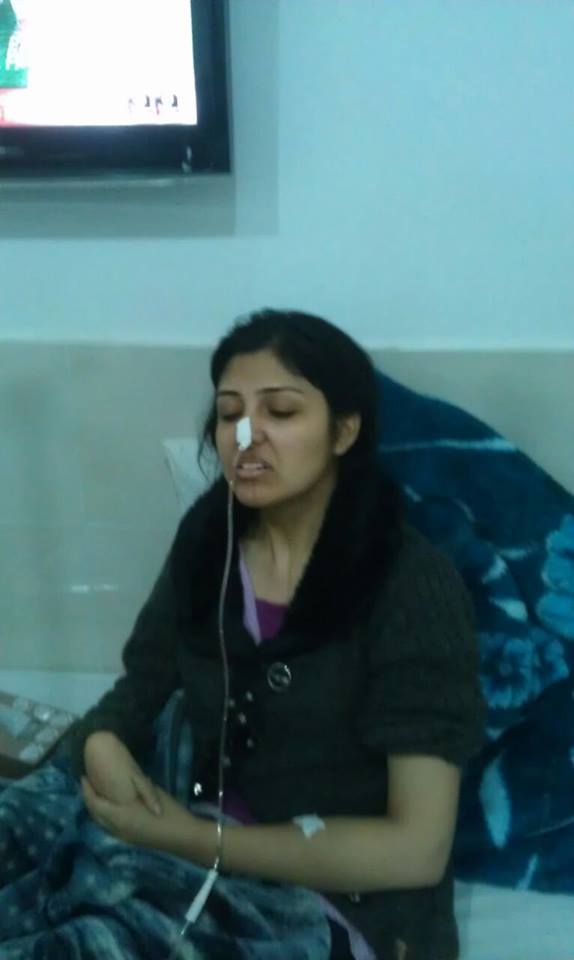
Before Surgery

After Surgery
In 2016, my life took a new turn when i won the preliminary round of KBS Quiz on Korea 2016 and went to sponsored South Korea trip to represent Pakistan in final round. The 7 days were the happiest day of my life and still it is. I met myself there. I interacted with participants from different countries and explored their cultures. I met my Korean friends for the first time. I attended KBS Music Bank. I met Monsta X, Lee Hwi Jae and Sistar’s Bora.

I am with Monsta X

I am with Lee Hwi Jae (famous Korean MC)
After returning back from Korea, i felt i was thrown into cage again. My brother left home to marry his girlfriend. I ended up in hospital. I was suffering from panic disorders and epilepsy again.(after 5 years). I faced domestic violence when my brother left home.It wont be wrong to say that 2017 and 2018 were worst years of my domestic violence. Due to this, I tried three times to go back Korea for studies but failed. In 2018, my mental health started deteriorating day by day. I committed suicides by taking sleeping spills. I deleted my previous Facebook page of over 1k followers. I deleted all my previous YouTube videos too. Then i decided to go somewhere else to safe myself. I applied in Malaysian University, Limkoking University of Creative Technology. and got admission there. Now my mental health is stable though sometimes i get stress out but i know how to take out myself from it. I am studying the course which i was passionate about so many years. That is Master in Digital Film and TV.In Malaysia, I am free to live my life without any fears. Chinese and Malaysians are very friendly and cooperative with me. I am sure I will go back to Korea one day and get chance to work with Korean filmmakers. Fighting
^_^
[UPDATE] I took the challenge by directing hearing-impaired boy in my debut film "Love Yourself". The inspiration of this film came from my personal experience in life working with hearing-impaired students. I have written the script and produced my film as well. It got selected in UK based film festival "First Time Filmmaker Session 2019" organized by Lift-Off Global Network. It gives the platform to independent film-makers to showcase their films at Pinewood Studios, Raleigh Studios, Hollywood. I got into Top 5 with public voting on online screening at Vimeo, out of 100 short films in my category. I won the free Intermediate Membership with Lift-Off Global Network for one year. With this achievement, I would like to break the glass ceiling attach with physically challenged people in Film industry. I would like to be a source of inspiration for the unheard people. It was not that easy task for me when I initiated this project. I started this project with the strong self determination and aim to fulfill my career goals in life.
#i met monsta x#I met lee hwi jae#i met bora#Quiz on Korea 2016#KBS Quiz on Korea#KBS#South Korea#malaysia#limkokwing university#Cerebral Palsy#Epilepsy#Lift off Global Network#First Time Film Session 2019#Love Yourself
3 notes
·
View notes
Link
Uniform syllabus for primary classes in August Islamabad : The Ministry of Federal Education and Professional Training on Wednesday announced the introduction of a single curriculum for primary classes throughout the country next August. According to the ministry, it in consultation with provincial and area governments and all other stakeholders have developed the Single National Curriculum (SNC) for pre-first to fifth grades that will be followed by all public and private sector schools across the country from the next academic year. “On the directives of Federal Minister for Education and Professional Training Shafqat Mehmood, the new year will now start in August 2021 due to extension in examination dates to be held in May/June and prolonged school closures in the academic year of 2020,” it said. The ministry also said the National Curriculum Council in consultation with all stakeholders on the ministry’s orders had developed model textbooks aligned with student learning objectives prescribed by the Single National Curriculum for pre-first to fifth graders. The ministry said it had issued a letter to all provincial and area governments regarding the single national curriculum textbook policy on the directions of the federal education minister. According to the policy, private publishers are allowed to develop textbooks to be used by students under the new curriculum on the condition that the books are aligned with the [student learning outcomes] prescribed by SNC. Also, the publishers will require a no-objection certificate (NOC) by the provincial textbook boards so that they may ‘check any inclusion of anti-Pakistan, anti-religion, and any other hate material’. The ministry also advised the countrywide textbook boards to facilitate the NOC (no objection certificate) procedure without red-tapism and avoiding cumbersome administrative complications. If things go as planned, the single curriculum for middle classes will be introduced in 2022 and for high and higher education classes in 2023. According to the education ministry officials, the country has three parallel systems of education, including public schools, private schools and seminaries, so the SNC has been developed to bring the entire country’s schooling education system under one umbrella. They insist that the initiative is meant for one system of education for all in terms of curriculum, the medium of instruction and a common platform of assessment so that children across the country have a fair and equal opportunity to receive a high-quality education. The officials say before the SNC development, multiple comparative studies were carried out to align the SNC with international standards and they include analysis of Pakistani curriculum with Singapore and Cambridge’s, comparison of Pakistan Learners’ Standards with Singapore, Malaysia/Indonesia & UK’s. All the findings were incorporated in the SNC. The ministry also consulted all federating units, public sector, private sector, federal government educational institutions Cantonments & Garrisons, seminaries, Cambridge University UK for English, Maths and Science, and LUMS and AKU-IED. https://timespakistan.com/uniform-syllabus-for-primary-classes-in-august/9410/
0 notes
Text
Four suspected coronavirus cases surface in Pakistan - world news
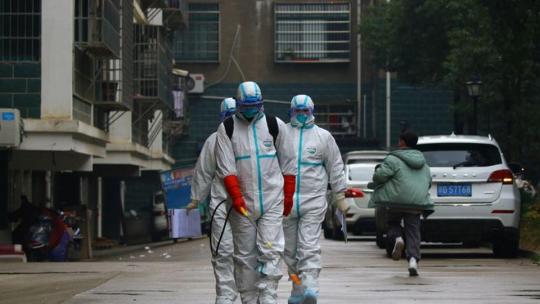
Pakistan’s National Institute of Health (NIH) has clarified that there were no confirmed cases of coronavirus in the country, but four Chinese nationals have been hospitalised in Multan and Lahore for showing symptoms of the disease.On Saturday, NIH chief Major General Aamer Ikram said a suspected patient had been admitted to the Nishtar Hospital, Multan and kept in the isolation ward after he showed symptoms of the disease including flu, cough and fever, reports The Express Tribune.“His clinical condition is stable now and its does not seem to be a case of the novel coronavirus,” he added.Samples from the suspected patients have been taken and sent to China for confirmation as there are no laboratories in Pakistan equipped to diagnose the pathogen.According to sources, the Chinese national travelled from China to Dubai and reached Karachi on January 21. After landing in Karachi, he took a flight to Multan.In Lahore, three Chinese nationals were admitted to the Services Hospital and shifted to the isolation ward.According to hospital sources, the suspected patients were residents of the Chinese city of Wuhan, the epicentre of the outbreak, and had recently arrived in Lahore.“They came to the hospital complaining of chest pain, fever, flu and cough,” a senior doctor at the hospital told The Express Tribune. “They were shifted to isolation ward and their blood samples were collected. These samples will be sent for confirmation.”According to the Foreign Ministry, there are 28,000 Pakistani students in China. Around 800 Pakistan traders are living in China and 1,500 others frequently travel there. Over 500 students are studying in Wuhan.The disease has already spread to a dozen other countries with Canada confirming its first case on Saturday after a patient in Ontario tested positive. The man is said to have travelled from China recently.Besides Canada, the cases reported outside China were six in Hong Kong; five each in Thailand and Macao; four in Australia; three each in South Korea, Taiwan, Singapore, Malaysia, Nepal and France; two each in Japan, the US and Vietnam. The death toll due to the novel coronavirus (2019-nCoV) outbreak in China has increased to 56, while the number of infected persons were 1,975, the country’s National Health Commission said on Sunday.Chinese President Xi Jinping has warned that the spread of the deadly illness was accelerating. Read the full article
#.us.news&worldreport#.us.news&worldreportrankings#0bbcworldnews#0worldproblems#0worldwar#0-worlds-hardest-game#1minuteworldnewsbbc#1worldcountries#1worldcup#1worldtradecenter#1worldwar#1worldwarbetween#1worldwarbetweenwhichcountry#1worldwarinhindi#1worldwarreason#1worldwaryear#2killedworldnews#2worldrichestman#2worldtradecenter#2worldtradecenternews#2worldwar#2worldwarcountries#2worldwardate#2worldwarinhindi#2worldwarinindia#2worldwarreason#2worldwarstarted#24/7worldnews#3wordsinjapanese#3worldcountries
0 notes
Text
Asian Anarchist, Anti-colonial and Anti-Authoritarian Reading List
Note: This was originally just a reading list that wasn’t started by me. The project eventually got abandoned and I remembered it recently, so I’m posting it here instead of Google Docs so more people can actually use it. I tried to clean it up a little but I’m too lazy to take away a bunch of the idiosyncrasies and asides that accumulated. Whatever could be found online (for free) is listed, whatever couldn’t is listed with the place to buy the book in question. Also I don’t use Tumblr so I have no clue if this will like delete itself or anything. Oh and Anti-Authoritarianism and Anarchism are used interchangeably, and things that really shouldn’t be considered anarchism (Indigenous Resistance to states and modern society for example) is listed because honestly more people need to know about it anyways. Share this if you want, it was rotting away on some godforsaken corner of the internet anyways, it needs sunlight.
Global Anarchism
Non-Western Anarchisms, Rethinking the Global Context (Jason Adams)
The Art of Not Being Governed: An Anarchist History of Upland Southeast Asia by James C. Scott (Libgen link to The Art Of Not Being Governed here)
Bibliography of Western Language Publications on Asian Anarchism (Compiled by: Eef Vermeij / 2nd draft, August 2015)
Anarchism A Documentary History of Libertarian Ideas (Compiled by Robert Graham)
Pan-Asian Struggles and Solidarity & General Anarchism
Building a Non-Eurocentric Anarchism in Our Communities: Dialogue with Ashanti Alston (Institute of Anarchist Studies)
Legacy to Liberation: Politics and Culture of Revolutionary Asian/Pacific America edited by Fred Ho
Against Communism, Against Capitalism: The New Asian Revolution by Anonymous
Asian Anarchism: China, Japan, Korea, India
Leftism in East Asia
Chinese Anarchism
The Chinese Anarchist Movement by George T. Yu and Robert Scalapino (The Anarchist Library)
What Women Should Know About Communism by He Zhen 何殷震(PDF)
Towards an Anarchist History of the Chinese Revolution by Andrew Flood
He Zhen and Anarcho-Feminism in China by Peter Zarrow (PDF)
The Individual in Early Chinese Anarchism: Feminism and Utopianism in the Tianyi (Natural Justice) by Ole Fossgård
Anarchism and Chinese Political Culture by Peter Zarrow
Shifu, Soul of Chinese Anarchism by Edward S. Krebs
Anarchist Publications of the May Fourth Era by Daniel SS Cairns
Chinese American Anarchism (+ Ungovernability?) (Asian American Anarchism)?
Chinese Anarchists in the U.S. by syndicalist (libcom.org)
The Equality Society: Chinese Anarchists in the 1920s USA by Mitchell Landsberg (anarkismo.net)
Anarchism in Hong Kong
An account and critique of the 1970s Hong Kong libertarian socialist group 70s Front by Ken Knabb (libcom.org)
Anarchism in Japan
A Brief History of Japanese Anarchism
Anarchist Opposition to Japanese Militarism, 1926-37 by John Crump (flag.blackened.net)
The Anarchist Movement in Japan, 1906-1996 by John Crump (The Anarchist Library)
E-texts of Shusui Kotoku’s works in Japanese
Against the God Emperor: The Anarchist Treason Trials in Japan by Stefan Anarkowic (AK Press)
The Labor Movement in Japan by Sen Katayama
1868-2000: Anarchism in Japan (libcom.org)
A Unique Tradition of Materialism in Japan by Katsuhiko Endo
Anarcho-syndicalism in Japan: 1911 to 1934 by Philippe Pelletier
Bakunin and Japan (An history of Bakunin, Osugi Sakae, and Anarchists in Japan) (Libcom.org)
ZENGAKUREN: Japan's Revolutionary Students A collection of essays and histories translated from the original Japanese.
Uprising: Music, youth, and protest against the policies of the Abe Shinzo government (Asia-Pacific Journal)
Monster of the Twentieth Century: Kotoku Shusui and Japan’s First Anti-Imperialist Movement by Robert Thomas Tierney (Contains both a history of Shusui’s works and an actual translation of Shusui’s Imperialism)
Anarchism/Leftism in Korea
Chronology: The Pre-War Korean Anarchist Movement
The Story of the Korean Anarchists and the Anarchist Revolution in Manchuria, 1929-1931 by Eric Every
The Korean Anarchist Movement
Anarchism in Korea: Independence, Transnationalism, and the Question of National Development, 1919-1984 by Dongyoun Hwang (2016)
Who Was Yo Un-Hyung? by Lee Wha Yang (Part II here)
Gwangju and the Paris Commune by George Katsiaficas on grassroots and decentralized uprisings.
Leftism in the Pacific
Imminent Rebellion 9 - An anarchist journal from the South Pacific
How the Polynesian Panthers Changed Our World
The Anarchist Confederation of Oceania
Anarchism in Tonga
Tonga - (libcom)
Anarchism in Samoa
The Mau Movement - (sidenote: bummed this blog is no longer active.)
Anarchism in New Zealand
Anarchism.nz
Interview with Sam Buchanan in Aotearoa New Zealand (Alpine Anarchist)
Women in the Polynesian Panthers Legacy - Paving the Way
Rabble Rousers and Merry Pranksters: A History of Anarchism in Aotearoa/New Zealand From the Mid-1950s to the Early 1980s by Toby Boraman (2008)
“It’s Not Black and White - It’s Blurry”: An Interview with Teanu Tuiono
Tino Rangatiratanga and Capitalism by Teanu Tuiono (Whenua Fenua Enua Vanua)
The Evolution of Contemporary Maori Protest
Leftism in South East Asia
The Art of Not Being Governed: An Anarchist History of Upland Southeast Asia by James C. Scott (Libgen link to The Art Of Not Being Governed here)
Repelling States: Evidence from Upland Southeast Asia
Anarchism/Leftism in the Philippines
The Age of Globalization by Benedict Anderson
About anarchist history in the Philippines (libcom)
An Archipelagic Confederation by Bas Umali
Gasera Journal - A oneoff publication by anarchist inspired activists in the Philippines. Articles are a mix of Tagalog and English.
Suspended Apocalypse: White Supremacy, Genocide, and the Filipino Condition - by Dylan Rodriguez
Cordilleran Resistance to the Philippine government
Macli-ing Dulag
Anarchism in Indonesia
Anarchism in Central Java, Indonesia - an interview with local anarchists by a WSM supporter travelling in the region (Workers Solidarity Movement)
A 2010 interview with Indonesian anarchists about the anarchist movement
Anarchism in Cambodia
Cambodia: Anti-Colonial Protest 1863 - 1945 (Blackwell Ref. Library.)
Anarchism in Vietnam
In the Crossfire: Adventures of a Vietnamese Revolutionary by Ngo Van, trans. by Hélène Fleury and Ken Knabb (eBook) (Libgen link to In the Crossfire here)
Anti-colonial Religious Movement In Vietnam
Early History of Vietnam - Anti-Colonial Struggle
The Anti-Colonial Movement in Vietnam
Phan Boi Chau & Dong Du
Anarchism in Thailand
Political Unrest in Thailand (libcom)
Class Struggle for Democracy in Thailand (Naked Punch)
Anarchism in Malaysia
Kuala Lumpur: Police raid Anarchist space
Leftism in South Asia
South Asian Anarchism: Paths to Praxis (Attack the System)
Revolutionary Lives in South Asia: Acts and Afterlives of Anticolonial Political Action (Routledge, Google Books)
Anarchism in India
The Gulabi Gang (Utter Pradesh, North India) (Shades of Brown)
Har Dayal’s Writings in Punjabi
Decolonizing Anarchism: An Antiauthoritarian History of India’s Liberation Struggle by Maia Ramnath
Decolonizing Anarchism: An Interview with Maia Ramnath (Institute for Anarchist Studies)
Dalit Theology and Christian Anarchism
Anarchism in Pakistan
News of Anarchism - Pakistan (Scribd)
Anarchists of Pakistan (Facebook guh)
The Pakistani Experiment in Anarchism (dawn.com)
#politics#anarchism#Asian#Asian America#Asian American#Leftism#Communism#Anarchy#anti-authoritarianism#anti-colonialism#reading#feminism#zomia#libertarian#libertarian socialism#libertarian communism#indigenous#indigenism#postcolonialism#decolonisation
9 notes
·
View notes
Text
Mahmood Shaam
Mahmood Shaam on February 5, 1940, is a Pakistani Urdu language journalist, poet writer and analyst.[1] He is one of the best known and most travelled journalist of Pakistan. After serving Pakistan's largest newspaper Jang Group for more than 16 years continuously as Group Editor, he has joined Ary Digital Group on 21 September 2010 to launch a new Urdu Newspaper. He has written many books on different subjects
Background
Shaam received his bachelor's degree in English literature, Persian and Philosophy from Government College Jhang in 1962. In 1964, he obtained Master's degree in Philosophy from Government College Lahore, a well reputed educational institute from where Allama Iqbal and Faiz Ahmed Faiz also graduated. He was editor of the college magazine Ravi. He began his career in journlism as a student and worked for his study needs.[3]Shaam has visited several countries during his journalistic career including United Kingdom, Singapore, Burma, Denmark, Sri Lanka, Saudi Arabia, Sweden, Malaysia, Switzerland, Syria, Qatar, Egypt, Italy, United Arab Emirates, India and Canada.[4]
Career
As journalist
Shaam started his career as a journalist and he has worked for 48 years including 16 years in Jang group. He has written 20 books including poetry books in which he describes condition of the oppressed people of Pakistan. His several books were banned by the military government of Sindh in April 1978, till December 1985. He was also arrested on August 4, 1977 by Martial Law Authorities but after 90 days detention he was released in 1978.[5]
In his journalistic life he has interviewed the national and international leaders as like Yasir Arafat, Zulfiqar Ali Bhutto, Indira Gandhi, Sheikh Mujeeb-ur-Rehman, Gerald Ford, Henry Kissinger, Tun Abdul Razak, Benazir Bhutto, Pervez Musharraf. Khan Abdul Ghaffar Khan, G.M. Syed, Khan Abdul Wali Khan, Maulana Bhashani, Mufti Mahmood, Asghar Khan and Ghulam Mustafa Jatoi.[6]
Pakistani media states about him;
"Shaam has been in journalism for almost 50 years and is known as an author and poet and in certain circles as a progressive intellectual as well. He was considered close at one time to Pakistan Peoples Party leaders, including Zulfikar Ali Bhutto and Benazir Bhutto, and was also jailed briefly during the martial law of General Ziaul Haq and saw his own weekly Mayaar (Standard) banned for some time under martial law regulations".[5]
Designations
He has worked as;[6]
Assistant Editor "Qindeel” Lahore, (1962 - 1964)
Magazine Editor Daily "Nawa-i-Waqt" Lahore, (1965 - 1967)
Editor Weekly "Akhbar-e-Jahan" Karachi, (1967 - 1970) and (1972 - 1975)
Special Correspondent for Sindh for Daily "Musawat" Lahore, (Jul 1970 - Apr 1972)
Editor/Publisher: Weekly "Mayar" Karachi, (Apr 1976 - 1978) & (1980 - 1994)
Bibliography
Poetry
Cardio Spasm (A Long Poem) 1969[6]
Akhri Raqs (Last Dance) 1971[6]
Chehra Chehra Meri Kahani (My Story on Every Face) 1975[6]
Nawishta-e-Dewar (Writings on Wall) 1980[6]
Qurbanion Ka Mausam (The Season of Sacrifices) 1991[6]
Mohallon Mein Sarhadein (Frontiers within Streets) 1999[6]
Ayyan Ayyan Yo Yo, Urdu poems for children[6]
Other books
Roo ba Roo (Face to Face)[6]
Larkana Se Peking (Larkana to Peking ) 1972[6]
Larkana to Peking 1973[6]
Kitna Qareeb Kitna Door (So Near So Far) 1974, A travelogue[6]
Bhutto Key Akhri Ayyam (The Last Days of Bhutto) 1979[6]
Nai Awazen (New Voices) 1987, Interview with emerging leaders[6]
Benazir Bhutto – The Way Out 1988[6]
Benazir Bhutto – Ek Hi Rasta 1988[6]
Bartania Mein Khizaan (The English Autumn) 1992, Travelogue[6]
Taqdeer Badalti Taqreerain (Speeches that Changed Destiny) 1993[6]
Khawateen-o-Hazraat (Ladies and Gentlemen) 1998[6]
Shab-ba-Kher (Good Night) 1999, A political novel[6]
Roo ba Roo (Face to Face), New Edition - Interviews from 1967 to 1977[6]
One to One, Interviews from 1977 to 2002[6]
Bharat Mein Black List (Black Listed in India)[6]
Amrica Kia Soch Raha Hai (Urdu), American visit after 9/11[6]
Visiting American Mind – English Version[6]
Mumlikat Aey Mumlikat 2007[6]
Pakistan Per Qurban, The day with Benazir Bhutto (1970 to 2007)[6]
Website
He has a website[6] of his own, which updates about his works[7][8][9].[2]
#Zulfikar Ali Bhutto#Urdu#United Arab Emirates#Pakistan#Mahmood Shaam#Faiz Ahmad Faiz#Abdul Wali Khan#Abdul Ghaffar Khan
0 notes
Text
Sudan puts Saudi-UAE religious and cheque book diplomacy to the test
By James M. Dorsey
A podcast version of this story is available on Soundcloud, Itunes, Spotify, Stitcher, TuneIn, Spreaker, Pocket Casts and Tumblr
Saudi Arabia and the United Arab Emirates’ chequebook diplomacy driven-soft power strategy is being put to the test in Sudan where a stand-off between protesters and the country’s ruling military council is at a decisive point.
With protesters refusing to tear down barricades in front of the military headquarters in the capital Khartoum and surrender the street, breaking off talks with the military council and demanding immediate instalment of a civilian government, the stand-off has become a battle of wills.
Like in Algeria, Sudanese protesters have learnt from the 2011 popular Arab revolts that initially securing their success in forcing a long-standing leader to step down depends on their ability to sustain mobilization and street pressure.
Both Sudan and Algeria have, in the wake of the toppling of presidents Omar al-Bashir and Abdulaziz Bouteflika, promised elections and arrested and/or detained officials and/or businessmen on corruption charges in a so far unsuccessful bid to pacify demonstrators and persuade them to end their protests.
With elections scheduled for July in Algeria while Sudan’s military is talking about one or more years of pe-election transition, Algerian protesters may have a leg up on their Sudanese brethren.
Nonetheless, protesters have also learnt that pledges of support by Saudi Arabia, the UAE, and Egypt potentially are a Trojan horse. The UAE and Saudi Arabia led the regional effort to roll back the achievements of the 2011 revolts that toppled the leaders of Egypt, Libya, Yemen and Tunisia.
Egypt joined the counterrevolution after general-turned-president Abdel Fattah al-Sisi overthrew Egypt’s first and only democratically elected president in a UAE-Saudi-supported coup in 2013.
As a result, protesters have also learnt that they are up against formidable opponents, who include not just the militaries and associated businessmen and politicians who have a vested interest in the ancien regime, but also their regional backers.
Saudi, UAE and Egyptian backing for renegade Libyan Field Marshal Khalifa Belqasim Haftar in the battle for Tripoli, the seat of the United Nations-recognized government, serves as an immediate reminder of the obstacles and risks the protesters face.
It has prompted at least some Sudanese to demand that the ruling military council reject US$3 billion in aid offered in recent days by the UAE and Saudi Arabia.
So far Saudi Arabia, the UAE and Egypt have paid lip service to the Sudanese and Algerian protesters while trying to bolster military efforts to be seen to be meeting their demands yet maintaining ultimate grip on their countries’ politics.
The removal of Mr, Al-Bashir in Sudan was of particular importance to the counterrevolutionary states because of the fact that he came to power with the support of Islamist forces, the Gulf states and Egypt’s bete noir.
Sudan moreover is geopolitically important because of its strategic location in the Horn of Africa, a battleground for rival camps in the Middle East, Mr. Al-Bashir’s playing of both sides of the Middle East divide against the middle, and the granting to Turkey of access to Suakin Island that faces the Saudi Red Sea port of Jeddah.
Initial indications are that protesters’ fears that Saudi and UAE cheque book diplomacy comes with strings attached are not unfounded. Anti-Saudi and UAE sentiment has also been fuelled by the two states’ acquisition of Sudanese agricultural land in recent years and opposition to the war in Yemen.
The head of Sudan’s military council, Lt. General Abdel Fattah Abdelrahman Burhan, developed close ties to the Gulf states in his former role as commander of Sudanese forces that are part of the Saudi-led military coalition fighting in Yemen.
Mr. Burhan, in apparent recognition of the 22-month old UAE-Saudi led diplomatic and economic boycott of Qatar, refused to meet with Qatari foreign minister Mohammed bin Abdulrahman al-Thani days after receiving a Saudi-UAE delegation. Sudan has since said it was working out arrangements for a Qatari visit.
Similarly, UAE and Saudi cheque book diplomacy has also bolstered Mauritanian support for their fight against Qatar and the Muslim Brotherhood.
This week’s visit by Pakistani prime minister Imran Khan to Iran during which the two countries agreed to form a joint quick reaction force to combat militant activity on their shared border, increase Iranian electricity sales to Pakistan and build a railway linking Islamabad, Tehran and Istanbul, puts the effectiveness of Gulf cheque book diplomacy to the test.
Pakistan appeared to be tilting toward Saudi Arabia in its dispute with Iran after the kingdom and the UAE pulled the cash-strapped South Asian nation back from the brink with $US 10 billion in financial aid and pledges of another $10 billion in investment.
Saudi Arabia’s greater emphasis on cheque book diplomacy coincides with a substantial cutback in global funding of Sunni Muslim ultra-conservativism to the tune of an estimated US$100 billion over the last four decades.
The cutback means that funding has been focused on regions that are of geopolitical importance to the kingdom such as the troubled Pakistani province of Balochistan that borders Iran and Yemen.
The cutback, however, does not mean that the fallout of the Saudi funding is no longer felt around the globe.
Some analysts believe that crown prince Mohammed bin Salman gives Saudi-backed ultra-conservative preachers a freer hand in Southeast Asia as opposed to Europe where he tries to project himself as an Islamic moderate. If so, its an approach that has produced at best mixed results.
Two Saudi-educated religious scholars, Bachtiar Nasir and Zaitun Rasmin, played a key role in ultra-conservative mass protests in 2016, the largest in Indonesian history, that brought down Jakarta governor Basuki Tjahaja Purnama, aka Ahok, an ethnic Chinese Christian and ally of Indonesian president Joko Widodo.
Both students in the 1990s at the Islamic University of Medina, a key Saudi vehicle for the promotion of ultra-conservatism, Messrs. Nasir and Rasmin have since their return to Indonesia propagated a puritanical strand of Islam and built a substantial following among the middle class.
However, in contrast to the kingdom, that more recently has been pushing in countries like Algeria, Libya and Kazakhstan a quietist, loyalist interpretation of Islam, Messrs. Nasir and Rasmin have advocated political activism similar to the kingdom’s Sahwa or Islamic Awakening movement that called for peaceful political reform.
The movement, believed to have been partly inspired by the Muslim Brotherhood, lost ground with the banning of the Brothers in the kingdom and the arrest of many of its leaders after the rise of Prince Mohammed.
Messrs. Nasir and Rasmin have aligned themselves with the far-right Sunni Muslim Front Pembela Islam (Islamic Defenders Front, or FPI), whose leader, Muhammad Rizieq Shihab, a charismatic preacher and one-time vigilante of Yemeni descent, fled in 2017 to Saudi Arabia, where he has been allowed to reside to escape sexual harassment charges.
The alliance provides Messrs. Nasir and Rasmin a mass base that they can mobilize. The two men, moreover, huge followings on social media. Mr. Nasir has 1.1 million followers on Instagram, 526,000 on Facebook, and 217,000 on Twitter.
Mr. Rizieq was briefly detained and questioned in November by Saudi police after he flew a black flag inscribed with the Muslim principle of tawhid or the oneness of God at the back of his Mecca residence. The flag resembled ones used by jihadists, including the Islamic State.
“Are you a criminal for installing the flag on your house? I don’t think so... I think Rizieq is not a threat to my country. If he had violated any laws, he would have undergone a legal process. Rizieq doesn’t have problems,” commented Usamah Muhammad Al-Syuaiby, the Saudi ambassador to Indonesia.
Despite the seeming differences with Saudi policy, Mr. Rasmin appeared to be doing the kingdom’s bidding when he travelled to Malaysia in advance of the 2018 elections to support those segments of the Sunni ultra-conservative community that wanted to ensure that scandal-tainted prime minister Najib Razak would be re-elected.
Saudi Arabia had sought to help Mr. Razak, who stood accused of defrauding Malaysia’s 1MDB state fund of billions of dollars, by publicly supporting some of his questionable assertions. The Saudi strategy failed with Mahathir Mohamed’s defeat of Mr. Razak and the souring of Saudi-Malaysian relations.
Ultra-conservatives toeing the Saudi line argued that a defeat of Mr. Razak would lead to chaos. They denounced those who voted against him as khawarij, literally ‘those who walk away’ but frequently defined as ‘the dogs of hellfire.’
In an interview with Utusan, the newspaper of Mr. Razak’s party, United Malays National Organisation (UMNO), Mr. Rasmin backed the ultra-conservative argument that “it is prohibited to elect or let a non-Muslim be elected,“ a reference to the fact that Mr. Mahathir’s alliance included non-Muslims and liberals.
Taken together, developments in Sudan, Algeria, Pakistan and Southeast Asia, suggest that the effectiveness of Saudi and UAE religious and cheque book diplomacy hangs in the balance. The developments raise the question whether short-terms successes can be maintained long-term.
Dr. James M. Dorsey is a senior fellow at Nanyang Technological University’s S. Rajaratnam School of International Studies, an adjunct senior research fellow at the National University of Singapore’s Middle East Institute and co-director of the University of Wuerzburg’s Institute of Fan Culture.
#sudan#saudi arabia#saudi#uae#iran#algeria#islam#libya#unitedarabemirates#pakistan#malaysia#indonesia
0 notes
Text
0 notes
Link
CHRISTCHURCH/WELLINGTON: The death toll in the New Zealand mosque shootings rose to 50 on Sunday when police found another body at one of the mosques, as families waited for authorities to formally identify victims and release their bodies for burial.
Australian Brenton Tarrant, 28, a suspected white supremacist, was charged with murder on Saturday. Tarrant was remanded without a plea and is due back in court on April 5 where police said he was likely to face more charges.
Friday’s attack, which Prime Minister Jacinda Ardern labeled as terrorism, was the worst ever peacetime mass killing in New Zealand and the country had raised its security threat level to the highest.
Footage of the attack on one of the mosques was broadcast live on Facebook, and a “manifesto” denouncing immigrants as “invaders” was also posted online via links to related social media accounts.
The bodies of the victims had not been released to families because investigations were going on, Police Commissioner Mike Bush said at a media conference in Wellington.
It is customary in Islam to bury the dead within 24 hours.
“We have to be absolutely clear on cause of death and confirm their identity before that can happen. But we are so aware of the cultural and religious needs, so we are doing that as quickly and sensitively as possible,” Bush said.
Bush said the body of the 50th victim was found at the Al Noor mosque, where more than 40 people died after a gunman entered and shot at people with a semi-automatic rifle with high-capacity magazines, before traveling to a second mosque.
HERO HAILED
One man at the second mosque in the suburb of Linwood was being hailed for distracting and confronting the shooter, preventing further deaths.
Relatives of a member of the Bangladeshi community wait for news at a community centre in Christchurch, New Zealand, March 17, 2019. REUTERS/Jorge Silva
Abdul Aziz, 48, told media he heard shooting and ran outside the mosque, shouting at the gunman and drawing him away from the building, the Newshub website reported.
Read Also: Six Pakistanis martyred in Christchurch attack, three missing: Foreign Office
Aziz, originally from Afghanistan, said he picked up one of the gunman’s discarded weapons and threatened the man, who drove off.
Police then rammed the gunman’s vehicle and arrested him.
“Those two police officers acted with absolute courage,” Bush said. “They have prevented further deaths and risked their own lives to do so.”
Church services for victims of the attack were held around the country, including at Christchurch’s “Cardboard Cathedral”, a temporary structure built after much of the central city was destroyed in a 2011 earthquake.
Thirty-four people were in Christchurch Hospital, with 12 in intensive care, and one child moved to dedicated children’s hospital in Auckland.
Greg Robertson, head of surgery at Christchurch Hospital said staff were used to seeing gunshot wounds and severe injuries, but the scale and nature of the attacks was different.
“The magnitude of this is the thing that is the most significant issue for people. It’s just comprehending what is the incomprehensible.”
At Hagley College, a school across the park from the Al Noor mosque, a support center was set up with a stream of victims’ friends and relatives arriving. One woman carried sandwiches and falafel.
A student, who asked not to be identified, said a friend had been killed.
“He was studying to be a pilot and we saw him for morning classes. Then he went to the mosque as usual. And we are not hearing from him,” he said. “I got a call last night from a friend, around midnight, to say he has passed away.”
The majority of victims were migrants or refugees from countries such as Pakistan, India, Malaysia, Indonesia, Turkey, Somalia and Afghanistan.
New Zealand starts to bury mosque attack victims
Pakistan’s high commissioner said six citizens had been killed and three were missing.
GUN REFORM
Bush said police did not believe that three other people arrested on Friday were involved in the attack. Two men faced charges unrelated or “tangential” to the attack, while a woman had been released, he said.
Tarrant did not have a criminal history and was not on any watchlists in New Zealand or Australia.
In a manifesto circulating online, Tarrant described himself as “Just a ordinary White man, 28 years old” who used the spoils of cryptocurrency trading to finance extensive travels through Europe from 2016-2018.
Ardern said Tarrant was a licensed gun owner who allegedly used five weapons, including two semi-automatic weapons and two shotguns, which had been modified.
“I can tell you one thing right now, our gun laws will change,” Ardern told reporters on Saturday, saying a ban on semi-automatic weapons would be considered.
New Zealand has in the past tried to tighten firearm laws, but a strong gun lobby and culture of hunting has stymied such efforts.
There are an estimated 1.5 million firearms in New Zealand, which has a population of only 5 million, but it has had low levels of gun violence.
The post NZ mosque shootings toll rises to 50, families wait to bury their dead appeared first on ARYNEWS.
https://ift.tt/2Y3rc4f
0 notes
Text
A Real World-Freedom and Challenges
It’s been almost 1/2 month since i arrived in Malaysia for my Master program in Digital Film and TV. The best thing about living here is that i am allowed to go anywhere, wear and eat whatever i want. I have explored Malaysia by myself except Kaula Lumpur. I will visit it very soon. Currently i am living in on-campus accommodation at Cyberjaya where my University “Limkokwing University of Creative Technology” situated.
Lets read my first journey going to another country alone. It wasn’t very easy decision to study abroad. I had to struggle with lots of things. I was not sure if i able to reach here as i had four epilepsy before coming to Malaysia (3 in August and 1 in September). My flight was on 23rd of September, 2018. I was afraid but mustered up my courage and prayed to God that my journey would become a stepping stone for recovering my disease.
When i arrived in the plane the air hostess helped me in everything which i never asked to do so till i arrived in Malaysia. Even the staff of airport accompanied me for so many hours till the guy from my university came to pick me. I was so moved by their kindness and gesture.
When i arrived to University then i got know that I was allotted the room at the 3rd floor and they have no lift for physically challenged students. I got shocked from this even i mentioned about my disability to the counselor so many times. The online recruitment team had also given me wrong information about fees structure and then when i arrived here, i had to paid more fees. Thanks God the head of International Student Services immediately allotted the room at the ground floor which is actually a male floor. Dont worry the male students are very respectful and helpful.
The real struggle started when i had to walk in every department in different floors to complete my registration process. I am disappointed there are no facilities available for physically challenged students not even ramp for wheel chairs. The strange thing is there are two lifts for VIP but only one lift for us which is still not working till now. When one day i need to go to the 3rd floor, i stood in front of the VIP lift. The girl was standing and asked very rudely “Do you want to talk to me?” I replied, “I have a problem, I am physically challenged.” She didnt even let me to explain my disability. She immediately refused by saying “This lift opens to the Founder office. You cannot go.” She then looked at the guard and said “SHOW HER A WAY!”. I felt i was discriminated. I was about to cry. The guard also felt bad for me. He even called other guy from the management to let me use the elevator but he refused as well. He revealed that that girl is from Iran and she is in management. The guard felt my pain and he was a emphatic person. He asked my nationality. I said “I am from Pakistan.” He replied, “ Then we could speak in Urdu/Hindi. I know your current PM Imran Khan.” Then our conversation started. After few minutes the guy came from the lift and asked me “Do you want to use lift” and i replied. “Yes” and the gentleman gave me permission to use the lift. When i needed to use lift again and i asked Malaysian girl (from the management) for permission and she humbly let me to use the lift. I had a very rough day. I even complaint to the staff of the marketing and international student service department but they seemed helpless. The things which management supposed to provide me, my hostel mates did for me. Here for the first time in my life i celebrated Halloween and enjoyed alot.
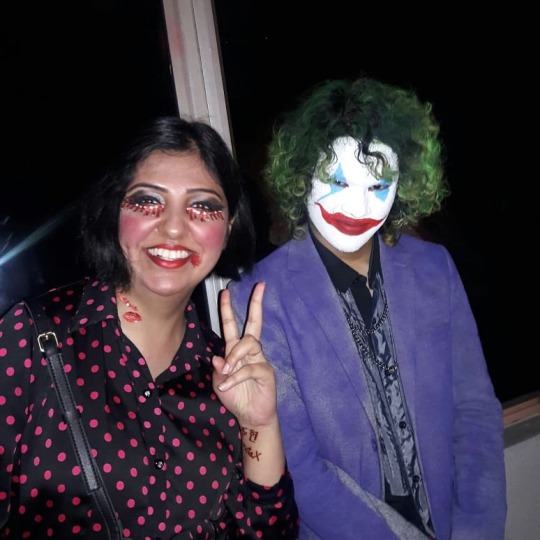
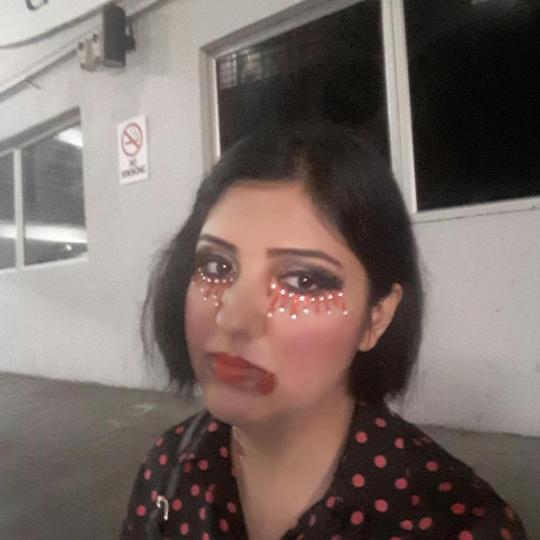
Lets talk about the outside of Malaysia. For the first time i experienced to traveled alone in cab, visited malls, explored Sunway and meeting new people. Malaysian were so generous and kind where ever i went. I really moved by the girl when i went to Tony Moly at IOI City Mall Putrjaya. She was humble and helped me in every possible way. She even took the photo with Seo Kang Joon ( not the real one XD).

The staff of TGV cinemas are so helpful that they take me to the hall every time i go. I had so much fun while exploring Malaysia by myself. It seems i got my freedom back. I got the chance to see favorite Korean Celebrities too. In every mall i visited, they have more facilities for physically challenged than my university provides. Even staff in malls are more cooperative than my university. I think my university should invite these malls staff to give training to the management.
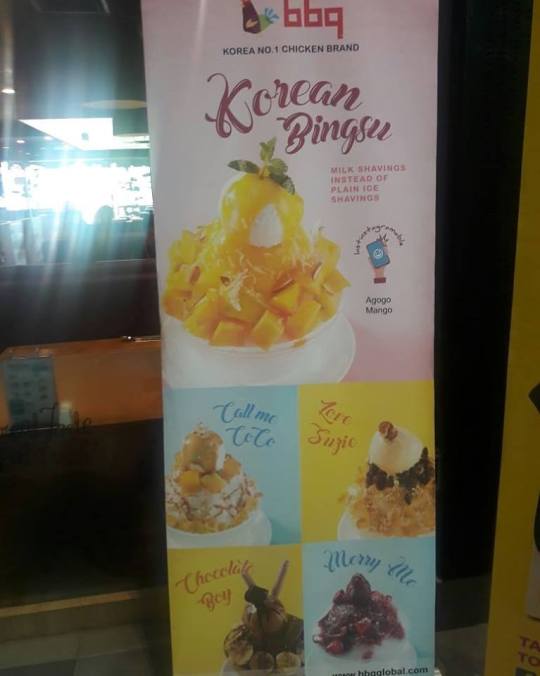
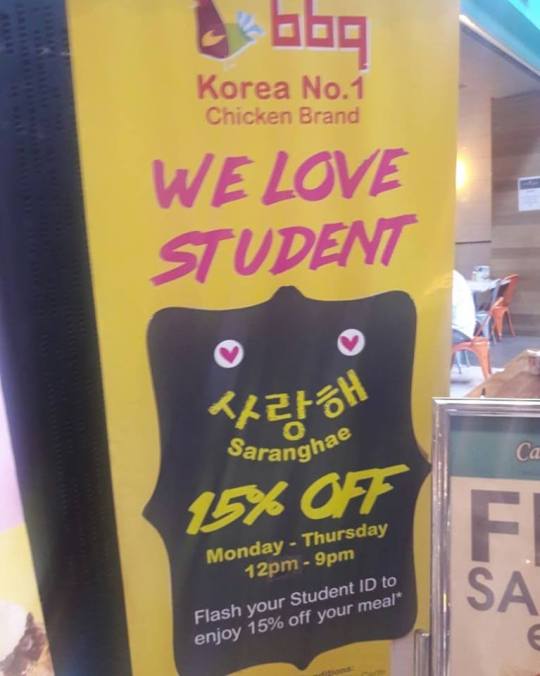
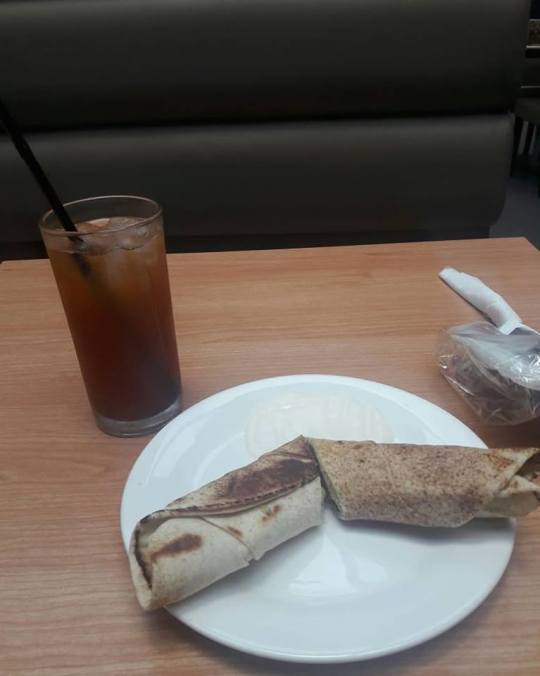
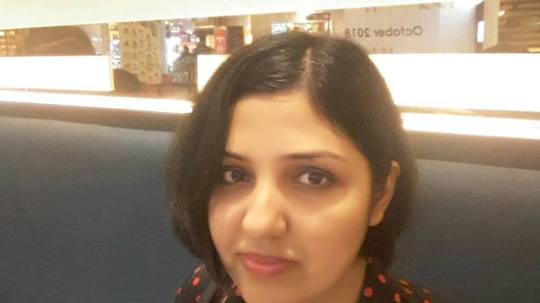

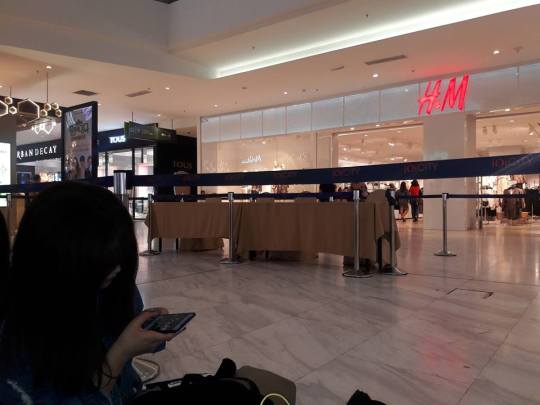
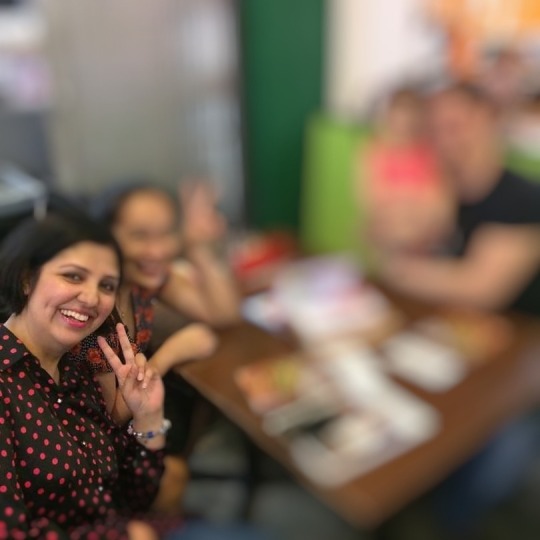
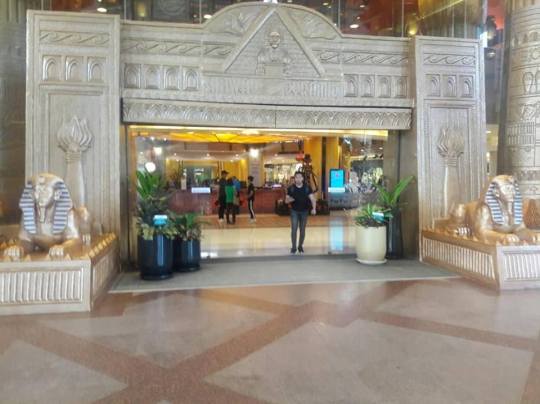
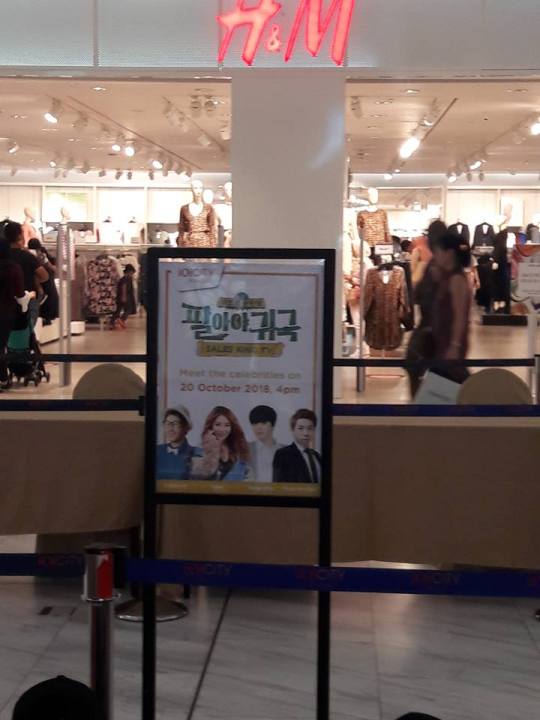



If the students and Professors and guards weren’t helpful then i would have changed my university. The Professors are cooperative but you need to show your interest in course. My Pakistani class fellows scared me to death about the reputation of this university. I was starting regretting upon my decision to study here. If some other good Pakistanis fellows weren’t there for me to show the reality,i would have return back to Pakistan which i don’t want at any cause. My brother and that Pakistanis warned me to avoid such people. They always complain and don’t want someone to see ahead of them.
The message i want to give to every students who always complains
In abroad, you need to find opportunity for yourself. You need to stand out and initiate the changes you want to see. No one will ever pamper you. This is not Pakistani society where you depends on your parents. This is real world. Though i have also found flaws regarding facilities for physically challenged students otherwise the education is good. No one is ever fool enough to awarded so many awards to that University where the education is not up to at International level. 90% students are foreigners and mostly are from China. It has different campuses in Asia and London too.
The biggest challenge of mine is that I don't have prior experience of film making. Mostly students are way ahead of me. I need to cope up with them. I want to have independent life and face challenges in order to be successful in my career. No one will ever be successful if he/she has not experienced hurdles in life.
The good news is that i have not experienced any epilepsy attack even after facing so many hurdles in Malaysia. The environment around here is helping me in recovering my disease. I hope i will get rid of it completely.
#malaysia#malaysiatrulyasia#limkokwing university#cyberjaya#freedom#challenges#master program#digital fiilm and TV
1 note
·
View note
Text
rules: tag the person that tagged you, answer all the questions and tag twenty people. i was tagged by my good friend @malek-rami, @headlongedmaggiemay and @hiken-no-stark thank you all!
1. how tall are you? i am 5′2 (a shortie okayy)
2. what color and style is your hair? Down to my mid back, it's long. I used to have layers but now its just eh...I’m into a ~natural~ look now
3. what color are your eyes? dark brown
4. do you wear braces? sadly, i used to for two years. And before that i wore a metal contraption to realign my jaw for a year. I’ll never get over that trauma
5. do you wear glasses? yuuuup i’m probably blinder than Roger
6. what is your fashion style? Honestly? All over the place, I mix desi (indian/pakistani) clothes with like jeans, or like my profession work wear? I like dresses too? Honestly it just depends on my mood
7. full name? Not getting my full name outta me tumblr
8. when were you born? my birthday
9. where are you from and where do you live now? Originally from Pakistan, but I grew up in Australia.
10. what school do you go to? I go to uni
11. what kind of a student are you? study last minute, have a mental breakdown before an exam and then do well anyway
12. do you like school? I’m paying for uni so yeah i gotta
13. what are your favorite subjects? impossible question to answer
14. favorite tv shows? outlander, titans, b99, this pakistani drama, the good place, uhmmmmm I’ll get back to you
15. favorite movies? bohemian rhapsody, Captain America the winter solider, HTTYD, shit I have so many more but I’ve forgotten
16. favorite books? The knife of never letting go, an ember in the ashes, the illuminae series
17. favorite past-time? sleep
18. do you have any regrets? Oh yeah, heaps tbh. but its more about growing from them as a person
19. dream job? uhhhhh
20. would you like to get married? Well i mean my dresses were so expensive it’d be dumb not to get married now lmao
21. would you like to have kids someday? someday
22. how many? like one. I’ll adopt the others lol
23. do you like shopping? Depends what we’re getting
24. what countries have you visited? Pakistan, UAE, Thailand, Malaysia and I’m pretty sure that's it?
25. what’s the scariest nightmare you’ve ever had?In my culture you don’t talk about your bad dreams
26. do you have enemies? my dumbass brain
27. do you have a s/o? My bae also Roger
28. do you believe in miracles? I’m still breathing so yeah i guess so
I tag my SUPER cute marvel pal @frcddiesmercury and @mercuryandmeme, @rogerscupboard @roger-taylor-stole-my-heart @deacytits and anyone else would like to do it!
0 notes
Text
The Most Affordable International Schools In KL & PJ [Updated]
When the Ministry of Education removed the restriction on international education for Malaysian students, more and more parents are considering sending their children to international schools. This is evident in the international schools mushrooming around the country. There are many reasons why Malaysian parents are sending their children to these premium schools. It could be because they believe an international education, be it UK, American or Australian curriculum, is superior compared to the national syllabus. It could be make smoother transition for students who plan to further their education in universities overseas. Another reason could also be due to the lower student and teacher ratio, paired with better facilities in the campus. Some argue that the cost of tuition classes that they will have to fork out when they send their children to national schools is not a small sum either. However, the fact remains: International education is not cheap. For the first tier international schools, the cost could easily double (or more) what one would pay for local private college education. In fact, the ExpatFinder International School Fee Survey 2016 ranked Malaysia as the 8th most expensive country for international education. If you are still insistent of an international education for your children, there are some international schools in the Klang Valley that may fit into your budget. Here are the top 14 schools that cost less than RM300,000 from Year to Year 11/12:
1. Al-Noor International School
Curricula offered: IGCSE, A Levels Al-Noor International School combines elements from the British, Bahraini and Indian curriculums to offer a modern education for children between the ages of 3 and 17. Languages offered in the school are English and Arabic. The facilities one can find in this school are labs for Science, Physics and ICT, library, smartboards, football field, badminton field, volley ball field, canteen, prayer room, first aid room and swimming pool. Here is the breakdown of the fees (extracted on January 2017): [table id=658 /] [block type="content-reverse"]Total fee for Year 1 to 11 = RM119,260.00 Preschool (Preschool, KG 1 & KG 2) = RM9,120.00[/block] Discounts: 5% for the 3rd child and 7% for the 4th child Address: No. 6 Lengkok Bellamy Bukit Petaling, 50460 Kuala Lumpur Malaysia Website: http://www.ais-kl.edu.my
2. Regent International School
Curricula offered: Cambridge, IGCSE According to Education Destination Malaysia, the Regent International School provides a low student to teacher ratio with the average class size of 25 students in the main campus located in Klang. The school is open for students between the ages of 5 and 17, offering British Cambridge education with English language as the medium of teaching. Here’s the fee schedule from Year 1 to Year 11 (2015/16): [table id=659 /] [block type="content-reverse"]Total fee for Year 1 to 11 = RM156,000.00[/block] Discount: 5% for 2nd child and 10% for 3rd child onwards. Applicable to tuition Fees only. Address: Regent International School Main Campus, Wisma Lourdes No 114, Jalan Tengku Kelana 41100 Klang, Selangor Darul Ehsan Website: http://www.regent.edu.my/
3. Idrissi International School
Curricula offered: IGCSE, UK Curriculum, International Primary Curriculum, Islamic Curriculum Other curriculum: Idrissi Islamic Curriculum, Meaningful Languages, Science, Design & Technology; Physical, Social and Health Education For parents looking for an Islamic international school, Idrissi International School will likely be on your list of consideration. The school also prioritises learning outside of the classroom with labs and organic eco garden made available for the students, teachers and parents. Facilities available include air-conditioned classrooms, library, sports field, canteen, basketball court, badminton court, IT resource centre, science laboratory, as well as art room. Below is the fee structure from preschool to secondary level (extracted on January 2017): [table id=660 /] [block type="content-reverse"]Total fee for Year 1 to 11 = RM160,800.00 Preschool = RM10,800.00[/block] Address: Idrissi International School, No.15, Jalan Setia Dagang, AK U13/AK, 7th Avenue, Seksyen U13, Setia Alam, 40170 Shah Alam, Selangor. Website: http://www.idrissischool.edu.my/
4. Tanarata International School
Curricula offered: UK Curriculum, IGCSE, A Levels One of the selling points brought forward by Tanarata International School is the low student/teacher ratio. According to its website, class sizes in the school rarely exceed a count of 20 to 22, with a cap on total school student enrolment at around 600 students. Located at Planters Ground with 5-acres of land, the school provides air-conditioned classrooms, natural science labs, activity rooms for music and drama, creative and visual arts, as well as design, IT lab, library, lake-front café, auditorium, games room, sports field, indoor badminton courts and swimming pool. One of the more equipped campus, Tanarata International School is ranked the 3rd most affordable school in this list. Here’s the breakdown of the fees (extracted January 2017): [table id=661 /] [block type="content-reverse"]Total fee for Year 1 to 11 = RM165,000.00[/block] Discount: 10% discount on tuition fees for siblings of a current student Address: Tanarata International Schools Planters Grounds 3 1/2 Miles Kajang-Serdang Road, 43000 Selangor. Website: http://www.tanarata.net
5. Baseerah International School
Curricula offered: Cambridge, International Primary Curriculum, IGCSE, A Levels, Malay, Arabic, Islamic Civilisation Another Islamic international school, Baseerah also offers other international curriculum. Open to children as young as three years old, the school have classes from Kindergarten all the way to A Level. Although English language is the main medium instruction, students are also exposed to Arabic and Malay languages. Here’s the latest fee structure (2016/17): [table id=662 /] [block type="content-reverse"]Total fee for Year 1 to 11 = RM185,000.00 Preschool (Kindergarten 1 & 2) = RM18,800.00[/block] Discount:
Early bird discount 1: 10% discount of the tuition fees and deposit eliminated if the annual school fees for 1st and 2nd semester are paid before 15/10/2017.
Early bird discount 2: 5% discount for families who pay the 1st semester school fees within two weeks of beginning of the semester.
Sibling discount: 10% discount on tuition fees for subsequent children.
Address:
Baseerah Gombak, Lot 1815, Jalan Lintang, Sri Gombak Heights, Taman Sri Gombak, 68100 Batu Caves, Selangor, Malaysia.
Baseerah Shah Alam, No. 11, Jalan Pegaga 7 U12/B, Shah Alam, Malaysia.
Website: http://baseerah.edu.my
6. Sayfol International School
Curricula offered: IGCSE, UK Curriculum, International Advanced Levels (IAL) One of the few schools that allow students from as young as 2 years old, Sayfol offers British curriculum. In Year 11, students complete the Pearson Edexcel International General Certificate of Secondary Education (IGCSE) Examinations, and then they continue to Year 12 and Year 13 for the IAL Examinations. Here’s the fee structure (2015/16): [table id=663 /] [block type="content-reverse"]Total fee for Year 1 to 11 = RM202,680.00 Preschool (Early Years, KG1 & KG 2) = RM31,500.00[/block] Address: No. 261, Jalan Ampang, 50450 Kuala Lumpur, Malaysia. Website: http://sayfol.edu.my/
7. Sri Kuala Lumpur International School
Curricula offered: Cambridge Primary, IGCSE, O Levels Started with only six students in 1979, Sri KL has expanded to a 5.7-acre school located in Subang Jaya. Some of the facilities available are air-conditioned classrooms, 25-metre swimming pool, science labs, multipurpose hall, 300-seater auditorium, dance & drama studio, music school, fine arts centre, gymnasium, canteens, libraries, computer labs, playground and sports field. Here is how much it costs to enrol your child to Sri KL (2016): [table id=664 /] [block type="content-reverse"]Total fee for Year 1 to 11 = RM227,820.00[/block] Address: No. 1, Jalan SS 15/7A, Subang Jaya, 47500, Subang Jaya, Selangor. Website: http://www.srikl.edu.my/
8. Beaconhouse Sri Inai International School
Curricula offered: Reception, Cambridge Primary & Secondary, IGCSE Sri Inai is one of the two international schools under the Beaconhouse group. It offers a curriculum based on the National Curriculum for England, Cambridge International Curriculum and Cambridge International Examinations (Checkpoint & IGCSE). Some of the facilities available in this campus are library, air-conditioned classrooms, music room, speech & drama Room, cafeteria, science labs, indoor badminton & netball courts, computer labs, and futsal & basketball courts. Here’s how much it cost to study in Beaconhouse Sri Inai International School (2017): [table id=665 /] [block type="content-reverse"]Total fee for Year 1 to 11 = RM243,900.00 Reception = RM12,900.00 [/block] Discount: 5% for the 2nd child, 10% for the 3rd child, 15% for the 4th child, and 20% for the 5th child onwards. Address: Beaconhouse Sri Inai Jalan Jenjarum, No. 1098, Jalan Jenjarum Off Jalan SS 23/6, Taman SEA, 47400 Petaling Jaya, Selangor, Malaysia Website: http://beaconhouse.edu.my/bh-sri-inai-international/
9. Maz International School
Curricula offered: UK Curriculum, IGCSE, A Levels Maz International School started out in Petaling Jaya. In 2011, the school opens the door to their Shah Alam campus, which offers boarding as well as day school. With students from Japan, Korea, Sudan, Indonesia, Pakistani and also Malaysia, students are exposed to culture and language from different parts of the world. Facilities are available for different fields of interest such as academic, performing arts and sports. Here is the fee strusture according to different levels (2016/17): [table id=666 /] [block type="content-reverse"]Total fee for Year 1 to 12 = RM258,000.00 Preschool (KG1 & KG 2) = RM19,500.00[/block] Address:
Maz International School Petaling Jaya, No.1 MAZ House, Jalan 20/19, Paramount Gardens, 46300 Petaling Jaya, Selangor.
MAZ International School Shah Alam Campus, Lot 2, Jalan Kristal 7/64, Section 7, 40000, Shah Alam, Selangor.
Website: http://www.mazinternational.edu.my/
10. REAL International School Cheras
Curricula offered: Cambridge Primary, Cambridge Secondary, UK Curriculum, IGCSE, Malaysian Curriculum Located on a 10-acre land nestled in Cheras, this campus is also known as the Suria Campus, which houses both international and private schools. Students can also opt for the boarding option. Here is the breakdown of the fees (2016/17): [table id=667 /] [block type="content-reverse"]Total fee for Year 1 to 11 = RM267,700.00[/block] Discount: Siblings discount available but details are not published. Address: Lot 217, Batu 13, Jalan Hulu Langat, 43100 Hulu Langat, Selangor, Malaysia Website: http://realschools.edu.my
11. Beaconhouse Newlands International School
Curricula offered: Reception, Cambridge Primary & Secondary, IGCSE Unlike the Sri Inai International School in Petaling Jaya, also under Beaconhouse, Newlands International School costs a little more. The reason could lie in the facilities available in the two campuses. However, the Newlands campus boasts a healthy balance between expatriate and local teachers. Here is the fee structure (2017): [table id=668 /] [block type="content-reverse"]Total fee for Year 1 to 11 = RM282,750.00 Reception = RM12,900.00[/block] Discount: 5% for the 2nd child, 10% for the 3rd child, 15% for the 4th child, and 20% for the 5th child onwards. Address: Beaconhouse Newlands International School: Lot 823 & 984 Batu 9, Jalan Cheras, 43200 Selangor Darul Ehsan, Malaysia. Website: http://beaconhouse.edu.my/welcome-to-newlands/
12. Kingsley International School
Curricula offered: O Levels, A Levels, UK Curriculum, Cambridge Secondary Located on a 16-acre land in Putra Heights, Kingsley first opened its door to its new campus in 2015. It features language labs, science and multimedia labs, indoor and outdoor playgrounds, futsal courts, Olympic-sized swimming pool, gymnastics hall, music and orchestra rooms, sound-proof music rehearsal rooms, cafeteria, multipurpose halls, art studio as well as art galleries. Boarding will also be possible in 2018 as the campus is constructing its own hostel blocks to cater to international staff and students. Here is the fee schedule for 2016/17: [table id=669 /] [block type="content-reverse"]Total fee for Year 1 to 12 = RM293,680.00 Reception = RM15,960.00[/block] Address: No. 2, 12, 12A & 16, Jalan Putra Mahkota 7/8E, Persiaran Kingsley, Kingsley Hills, Putra Heights, 47650 Subang Jaya, Selangor. Website: http://www.kingsley.edu.my/
13. Asia Pacific International School (APIS)
Curricula offered: IGCSE, Cambridge, UK Curriculum Started off in higher education 1993, the APIIT Education Group launched the Asia Pacific International School (APIS) in 2012. The campus located in Subang Jaya is equipped with music room, multipurpose hall, computer and science labs, swimming pool, library and canteen. Here’s how much it will cost for different levels (2015/16): [table id=670 /] [block type="content-reverse"]Total fee for Year 1 to 11 = RM294,900.00 Preschool (3+ to 5 years old) = RM32,760.00[/block] Discounts = 5% for the 2nd child, 10% for the 3rd child, 15% for the 4th child and 20% for the 5th child Address: No. 1, Persiaran A, Off Jalan Lapangan Terbang Subang, 47200 Subang, Selangor. Website: http://www.apis.edu.my/
14. UCSI International School, Subang
Curricula offered: International Baccalaureate, Cambridge, International Primary Curriculum, UK Curriculum, IGCSE Wholly owned by the UCSI Group, with experience in education since 1986, UCSI International School have two campuses available – one in Springhill, Port Dickson and Subang. The Subang campus offers the International Primary and Cambridge IGCSE curriculum, as well as preschool for children between the ages of 3 and 6. According to School Advisory, about 90% of the teachers in this campus are not of expatriate origin with a minimum of 6 to 8 years of experience teaching in International schools globally. Here’s the fee structure (2015/16): [table id=671 /] [block type="content-reverse"]Total fee for Year 1 to 12 = RM298,080.00 Preschool (Early Year 1 & 2) = RM23,100.00[/block] Address: Jalan SS13/4, 47500 Subang Jaya, Selangor Darul Ehsan Website: http://www.ucsiinternationalschool.edu.my/sj/ The above figures serve as a guideline for parents who are considering international education for their children. The amount does not include other miscellaneous fees such as meal plans, uniform, books and materials, and for new students, registration fees, application fees and assessment fees. If the cost for international education is out of your budget, you can also consider private schools who boasts similar low teacher to student ratio and facilities, but the students will be taught the national syllabus. However, the cheaper fees could mean less international students and teachers, and also less state-of-the-art facilities in the campus. International education does not come for cheap. Malaysian parents who are considering sending their children to international schools will have to think it through, especially financially. This is not a one-time cost, and the cost will likely go up due to education inflation and also as your child progresses through the years. Now that you know some of the most affordable international schools in the Klang Valley, it’s time to take a look at the most expensive international schools!
Image from Asia Life Magazine
The post The Most Affordable International Schools In KL & PJ [Updated] appeared first on iMoney Malaysia.
0 notes
Text
MBBS IN CHINA FOR PAKISTANI STUDENTS 2017
MBBS in China for Pakistani Students
The Bachelor of Medicine, Bachelor's of Surgery, commonly known as the MBBS program is one of the most well-known degrees in the entire globe. In China it usually requires five years of studying and education and one year of internship. The final year is when you go on internship to gain experience in the field. There are many well-known locations for studying the MBBS program, and China is a major study destination gaining thousands of students from Pakistan.
Let us have a look on the pros and cons of doing MBBS in China as a Pakistani student and as a Foreigner as a whole.
Advantages of study mbbs in China for Pakistani Students
Gaining International Recognition
The Growing global economy of China increases the academic system of china. It has fascinated worldwide students from USA, UK, Australia, Russian federation, Asia, Italy, Malaysia and other developed countries. Completing medical care studying here in China can offer extra points, when the student is seeking jobs that require international tasks. English language colleges are found in variety here in china. With China growing influence over the world as whole, studying in china will somewhat give you the upper hand during job applications. Also, with the mandarin language rapidly becoming one spoken globally, studying here in china will give you something extra to hold to your CV.
Healthcare in China is a Remarkable One

Government of China has started several reforms in the medical care techniques for the public. Most of the fundamental medical care rights of people are provided by the state like treatments, food and agricultural services. Advanced digital techniques are applied. All of these procedures and enhancements can offer more tasks to experts related to wellness insurance connected professions. Project 2020 is the leading plan for improving wellness of the China people. China also has ultra modern facilities that make learning very fun and easy. The country boasts of world class equipment for the studying and research of diseases. Studying in china means you will tap into the vast knowledge of lecturers and also have first hand information on how to use these sophisticated equipment.
Better Employment Opportunities
Chinese companies are prominent over whole of the entire globe in terms of manufacturing. It is the biggest manufacturer of technical equipment that are used in the pharmaceutical and medical fields. There are countless areas available for working for all foreign medical students. Many of foreign workers chose China because it gives them better expert exposure. Living costs in places there is also less.
The following are the summarized benefits of studying in China as a Pakistani student
What are the Benefits of Studying in China?
These are the benefits derived from studying in China:
1. China surrounds students with the right atmosphere which enables all students to study in happiness and satisfaction, while making students feel at home with the habitability of the natives.
2. The skills and knowledge that is gotten from the professors and lecturers are of high standard. A standard many will rightly match with that of Europe and the US.
3. Graduate students from China Universities are qualified to work in any Country. They are also qualified to sit any examination for a higher qualification in any country.
4. Over 89% of graduates from china stand out wherever they go due to the rich and exceptional internship opportunities and practical teaching lessons adopted by the colleges and universities in China.
As well, there are some disadvantages you should care about as a Pakistan Students:
1. All students will need to learn the Chinese language as an additional subject up to HSK-4 level to ensure adequate patient-doctor interaction in the hospital.
The language is usually a part of the program and hence there are no additional fees.
2. China has over 35% of the universities in PMDC approved list which are ‘C’ grade and offer low quality education and services. It then makes selecting universities very difficult.
3. The English speaking abilities and accents of some of the teachers is not of good quality and hence making it difficult for the students to understand completely, especially until they have studied and written HSK-2 level themselves.
4. In some of the hospitals, some of the international students are not allowed to touch the patients during internship and other skill practices and instead becomes some kind of observation.
5. After returning from China, the Pakistani students will still have to take examinations conducted by the PMDC to test their intelligence and expertise.
The following is a summary of all the cons in studying in china as a Pakistani student
The important issue with learning in China is with the language. Mandarin (Chinese) is the official language of mainland China. It is the biggest language spoken in the world in terms of native speakers.
It comprises of symbols and signs. It is also a very ancient language. In China, most billboards, signs, text written on advertisements, turns, streets, train channels and other places are all written in Chinese characters. Most of the majority in China speaks mandarin fluently, with little or no proficiency in English language. It will be quite challenging for an international student who speaks English to learn Chinese languages and even more difficult to learn it before going to China.
International learners face medical concerns due to new reforms in health administration. The climate in China is very different from that which is in Pakistani, and when a student fails to cope well, he/she might fall sick. China’s food is literally also very different from that which is eaten in Pakistan. China has so many varieties of foods which can be very difficult to eat. This can also bring about illnesses if the students fail to cope with the foods. For this reason most students will have to purchase health insurances during their studies in China.
All these adaptation problems can lead to several inconveniences and hence deter some students from studying in China.
Study MBBS at HBNU is one of your best choices. For more information about mbbs programs and more universities, you can visit www.acasc.cn.
0 notes
Link
Hi #karachites Meet university staff and official representatives of 12 countries under one roof. Mark your Calendar on Saturday 29 July 2017 from 12PM to 7PM in Marriot Hotel Karachi and be a part of this Fair. Entry is Free. Please bring copy of your docs to get on spot admission assessment by experts. All your study abroad queries will be discussed. Here is opportunity to choose your study options in Australia, Canada, New Zealand, Germany, Ireland, USA, UK, Malaysia, Ireland, Holland, Austria or in China for Master, Bachelor or foundation programs after O Level. Result awaiting students can apply. For further details call 03452066100 or email your docs at [email protected] or sign up at http://ift.tt/2uSo3ZM so our counselor may reach you.
0 notes
Photo

Meet Najia Sarfraz from Pakistan
Najia Sarfraz came to Malaysia to study Bachelor of Business (Hons) in International Business together with her family. As the Vice-President of Limkokwing University’s Pakistani Student Community, she provides leadership support for various student societies and clubs.
“When I came to Limkokwing, I realised that it was a place where I can build my own platform,” she said. “Not only in academic but in terms of curricula and social work.”
Najia is currently studying at Limkokwing University with her mother, sister and brother. Her family supports her academic studies since they are all studying within the same field.
#pakistan#business#international#international business#cyberjaya#malaysia#study abroad#study malaysia#global#multicultural
0 notes